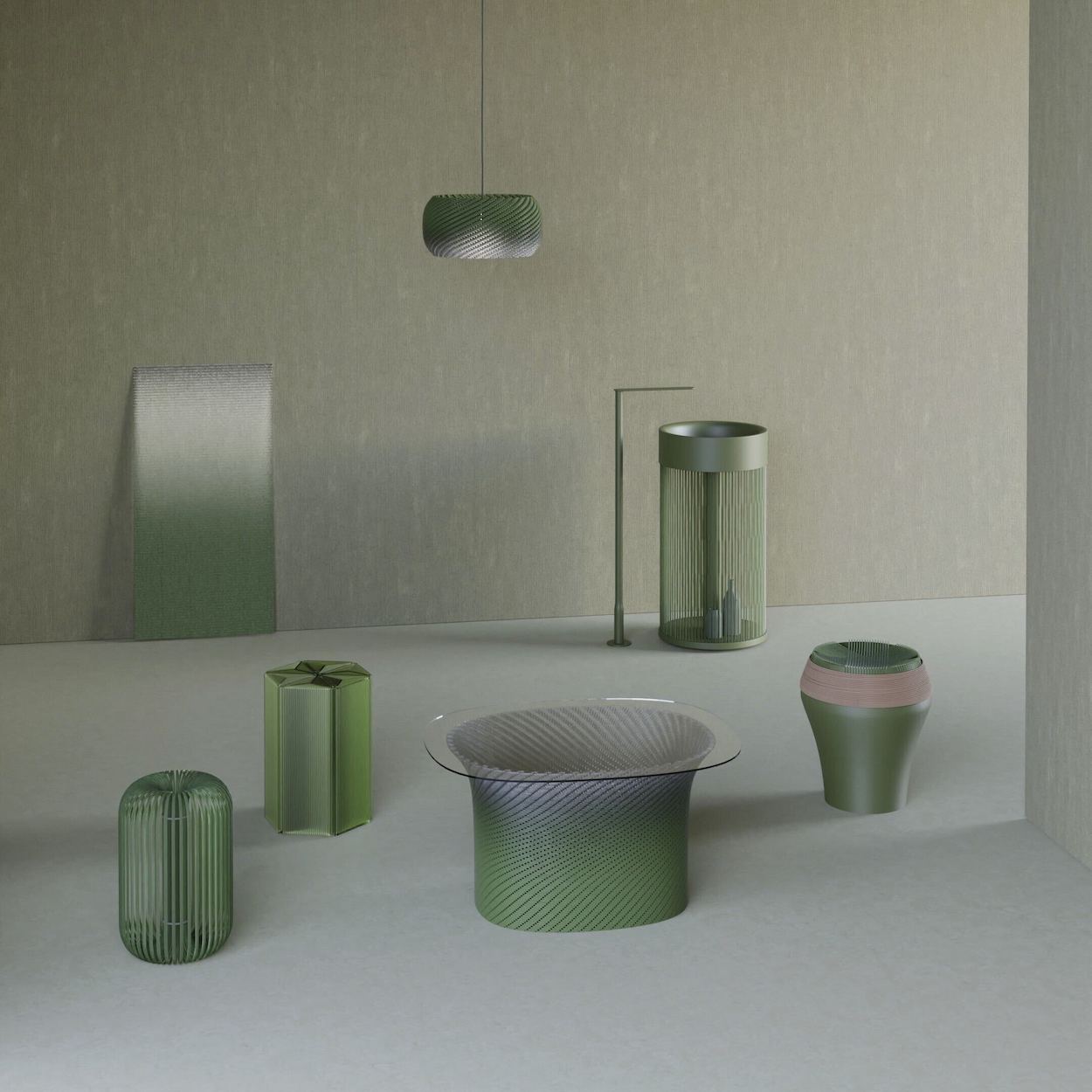There’s much to glean about in-the-moment furniture trends at Salone del Mobile, but one section in particular sheds light on what to expect tomorrow. SaloneSatellite, the furniture fair’s closely watched section dedicated to designers under the age of 35, brought together work by more than 550 rising talents hailing from 34 countries. Each took a stab at answering longtime curator Marva Griffin’s chosen theme, this year being: “Design: Dove vai?” (“Design: Where are you going?). It’s an important question—and one not so easily answered—that plumbs our era’s sweeping economic, social, and environmental shifts.
The annual SaloneSatellite Award nods to the designers who best answered that question. This year’s first prize went to Honoka, a Japanese design collective that used 3D printing techniques to recycle old tatami mats into a contemporary furniture collection spanning a water basin and stools to pendant lighting. Made from sewn-together igusa grass, tatami mats are often a defining feature in ryokans and traditional Japanese-style rooms. Despite their calming aroma and natural resistance to mold, their usage has declined as modern consumers opt for more contemporary living choices.
Instead of discarding the tatami mats, Honoka shows how they can receive a new lease on life. Their process involves pulverizing old mats, combining them with biodegradable plastics, and using that material for 3-D printing. Though they appear distinctly contemporary, the resulting pieces are woven with traditional Japanese symbolism. The body of James Kaoru Bury’s self-standing basin features multiple stripes inspired by the tachiwaki pattern often used in kimonos. A leaning accent light designed by Shinnosuke Harada resembles bundled igusa grass before it becomes tatami. Japanese architecture inspired a lattice-like vase, which allows plants to be inserted at any angle like ikebana.
